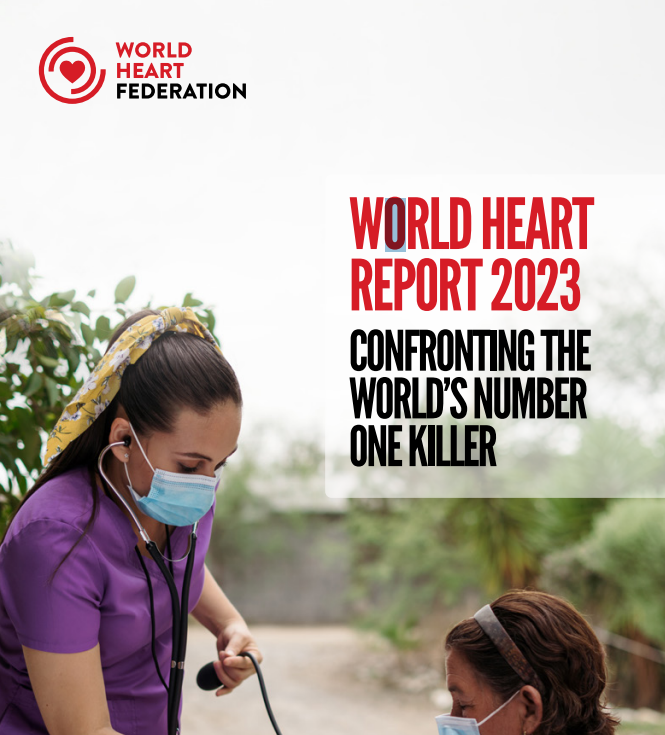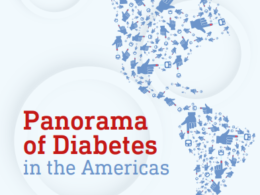Health N Tech Transformation
strategy institute
Joaquim Cardoso MSc
Chief Researcher: Health N Tech Transformation — Institute
Chief Editor : Health N Tech Transformation — Portal
Chief Senior Advisor: Health N Tech Transformation — Advisory
May 24, 2023
ONE PAGE SUMMARY
- CVDs have been the leading cause of death globally for decades, with 20.5 million deaths recorded in 2021, accounting for around one-third of all global deaths. Ischemic heart disease is the leading cause of premature death in many countries.
- Cardiovascular diseases (CVDs) are caused by a combination of socio-economic, metabolic, behavioral, and environmental risk factors, including high blood pressure, unhealthy diet, high cholesterol, diabetes, air pollution, obesity, tobacco use, kidney disease, physical inactivity, harmful use of alcohol, and stress.
- While there has been some progress in reducing CVD death rates globally, the decline has been faster in high-income countries compared to low- and middle-income countries where more than 80% of CVD deaths occur.
- Inequalities in cardiovascular outcomes exist within countries, including disparities based on sex, ethnicity, socioeconomic status, and other factors. The equitable distribution of prevention, diagnosis, treatment, and management of CVDs has not been achieved.
- The World Health Assembly set a goal of reducing premature mortality from noncommunicable diseases, including CVDs, by 25% by 2025. However, the current pace of decline in CVD death rates is insufficient to achieve this goal.
- The COVID-19 pandemic has impacted health systems and policies, posing challenges in prioritizing efforts to address CVDs and other health initiatives.
- The World Heart Report aims to provide policymakers and advocates with information to reduce CVD deaths and accelerate progress in cardiovascular health. It highlights differences in CVD burden, risk factors, and structural barriers, with policy recommendations.
- The report provides a comprehensive overview of cardiovascular health dimensions, policy implementation assessment, and relevant policy recommendations based on the latest available data.
INTRODUCTION

World heart report 2023 — Confronting the world’s number one killer
World Heart Federation (WHF).
Mariachiara Di Cesare, Honor Bixby, Thomas Gaziano, Lisa Hadeed, Chodziwadziwa Kabudula, Diana Vaca McGhie, Jeremiah Mwangi, Borjana Pervan, Pablo Perel, Daniel Piñeiro, Sean Taylor, Fausto Pinto.
Reviewers: Victor Aboyans, Álvaro Avezum, Rick Chazal, Jean-Luc Eiselé, Naomi Herz, Andre Pascal Kengne, Angela Koh, Amam Mbakwem, Jagat Narula, Gregory Roth, Saate Shakil.
Editor: Edward Fox.
The World Heart Report 2023 was made possible through support from Novartis Foundation.
Part 1: Introduction
Cardiovascular diseases (CVDs) affect the heart or blood vessels and can be caused by a combination of socio-economic, metabolic, behavioural, and environmental risk factors.
These include high blood pressure, unhealthy diet, high cholesterol, diabetes, air pollution, obesity, tobacco use, kidney disease, physical inactivity, harmful use of alcohol and stress.
For decades, CVDs have been the leading cause of death globally.
In 2021, 20.5 million people died from a cardiovascular condition[1], a figure that accounted for around one-third of all global deaths and was a significant increase from the 12.1 million CVD deaths recorded in 1990.
Ischaemic heart disease[2] is now the leading cause of premature death in 146 countries for men and 98 countries for women.
While CVD deaths have increased overall in the last three decades, globally the age-standardised death rate has fallen[3], indicating that some progress is being made.
However, a closer look at the data reveals this progress is uneven and beginning to stall.
The decline in death rates[4] for CVDs has been much faster in High-Income countries (HICs) compared to low- and middle-income countries (LMICs), where more than 80% of CVD deaths occur globally.
In addition to disparities between countries, inequalities in cardiovascular outcomes within countries is also staggering, with research showing disparities according to sex, ethnicity and socioeconomic status, among others.
The world is far from achieving the equitable distribution of prevention, diagnosis, treatment, and management of CVDs.
The high-level trends are clear but marked variations by region and sex for CVD death rates and risk factors show a more complex picture.
Ultimately, these complexities have important implications for policy at the country, regional and global level, particularly when determining the drivers of CVDs and responses that will bring mortality and case rates down and protect people’s health.

At the global level, there is an important foundation to build from in making progress against CVDs.
In May 2012, the World Health Assembly (WHA) adopted a resolution setting the goal of reducing premature mortality from noncommunicable diseases (NCDs)[5] by 25% by 2025.
One year later, the NCD Global Monitoring Framework was launched to help drive progress in the prevention and control of NCDs and ensure that political commitment remains in tackling them.
The Framework includes nine voluntary global targets focused on combating behavioural and metabolic risk factors and strengthening national health system responses[6].
Unfortunately, the current pace of decline in CVD death rates is insufficient to achieve the goal of a 25% reduction in mortality by 2025, despite the work of international organisations and country governments in recent years.
There are myriad reasons behind this, from a lack of funding to challenges securing the political commitments necessary to comprehensively tackle an issue as far-reaching as CVDs.
Further, the impact of the COVID-19 pandemic on health systems and policies means many countries are assessing how to prioritise as they attempt to reignite progress across multiple health initiatives and recover from the economic impact of the pandemic.

This first-ever World Heart Report is aimed at equipping policymakers and advocates around the world with the information needed to help reduce CVD deaths and accelerate progress in cardiovascular health.
The report findings highlight the main differences between geographies in terms of CVD burden and risk factors, as well as structural barriers and inequities in CVD health, with the goal of guiding policymakers at national and international levels toward the priorities they should seek to address.
Key policies to tackle CVD and its risk factors are also summarized.
Future World Heart Reports, along with WHF’s data hub the World Heart Observatory[7], will aim to provide easy access to CVD data to inform research and advocacy.
The report begins with a comprehensive overview of the main dimensions of cardiovascular health, bringing together epidemiological, policy and economic data.
It then provides assessment of policy implementation through the WHF Policy Index, and provides relevant policy recommendations.
Throughout the report, the latest comprehensive sources for which data disaggregated by country, age and sex are available have been used. (Appendix Figure 1). Global, regional[8], and country level estimates from 2019 relevant to atherosclerotic CVDs[9] are presented in this report, as these are the most comprehensive and recent data set available.
We acknowledge that some of these sources use modelling to develop estimates, and that there are important gaps in the data that inform these models, particularly in certain geographies.
For example, approximately 85% of countries in the Sub-Saharan Africa region do not have Vital Registration Survey data available to inform models[10].
We acknowledge that COVID-19 had an important impact on CVDs; however, because of limited data, it is outside the scope of this report[11].
References
[1] Lindstrom M, DeCleene N, Dorsey H, et al. Global Burden of Cardiovascular Diseases and Risks Collaboration, 1990–2021. J Am Coll Cardiol. 2022 Dec, 80 (25) 2372–2425
[2] Ischaemic heart disease, also referred to as coronary heart disease, are problems caused by narrowed coronary arteries that supply blood to the heart muscles.
[3] Age-standardisation is a technique used to better compare disease outcomes, such as death rates, across populations. See page 6 for a more detailed description.
[4] Any reference to death rates in this document refers to age-standardized rates.
[5] The resolution covers NCDs broadly, and specifically mentions CVD, cancer, diabetes and chronic respiratory diseases.
[6] World Health Organization. NCD Global Monitoring Framework. Available from: https://www.who.int/publications/i/ item/ncd-surveillance-global-monitoringframework (last accessed 10 May 2023).
[7] The World Heart Observatory can be accessed via the WHF website; www. worldheart.org
[8] Super-regions, as reported by the Global Burden of Disease. See Appendix for a detailed explanation of the regional classification
[9] Atherosclerosis is the thickening or hardening of the arteries caused by the build-up of fats, cholesterol and other substances in the artery walls. Atherosclerotic CVDs, including coronary heart disease and stroke, represent 85% of all deaths from CVD, and are the leading cause of death worldwide.
[10] Murray, C.J.L. The Global Burden of Disease Study at 30 years. Nat Med 28, 2019–2026 (2022). https://doi.org/10.1038/s41591-022-01990-1
[11] A separate methodological supplement, explaining in greater detail the analytical approach and data sources used to develop this report, is available on the WHF website: www.worldheartfederation.org












